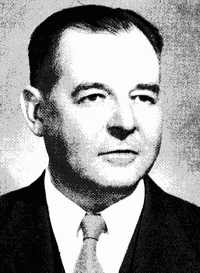 Harold Hotelling’s articles on econoimcs were few, but his contributions were profound enough to make him one of the ‘leaders’ of the Paretian School, the ‘resurrectors’ the Marginalist Revolution in the 1930s.
Harold Hotelling’s articles on econoimcs were few, but his contributions were profound enough to make him one of the ‘leaders’ of the Paretian School, the ‘resurrectors’ the Marginalist Revolution in the 1930s.
Hotelling’s 1929 paper on the stability of competition introduced the notion of spatial competition in a duopoly situation. The solution to this problem was in fact an early statement of a very well-known game-theoretic solution concept: the subgame-perfect equilibrium (as later defined by SELTEN). His 1929 paper on depreciation provided its modern definition as the decline in discounted future values. In 1931, he advanced another technique into economics, the calculus of variations, into a now famous analysis of resource exhaustion.
His 1932 piece reworked the theory of production into a choice-theoretic framework based on profit-maximization, setting the foundations of the modern Neoclassical approach. His 1935 derivation of demand was actually simultaneous with that of John Hicks and ROY GD ALLEN. His famous 1938 presidential address to the Econometric Society introduced the marginal cost pricing equilibrium as a general welfare proposition: roughly, that economic efficiency is achieved if every good is produced and priced at marginal cost. This would be the foundation of the Fundamental Welfare Theorems of Paretian general equilibrium theory. It was also here that he introduced his famous “two-part” tariff as an alternative solution in situations of natural monopoly.
Although appointed as a professor of economics at Columbia (oddly, one of the strongholds of the American Institutionalist school), one can argue that Harold Hotelling was a statistician first, economist second. His work in mathematical statistics included his famous 1931 paper on the Student’s t distribution for hypothesis testing, in which he laid out what has since been called ‘confidence intervals’. At Columbia, he ensured that the economics students under him were well immersed in statistical theory. He trained both Kenneth Arrow and Milton Friedman, and was instrumental in the appointment of ABRAHAM WALD.
Major Works of Harold Hotelling
– A General Mathematical Theory of Depreciation, 1925, Journal of ASA
– Differential Equations Subject to Error, 1927, Journal of ASA
– Applications of the Theory of Error to the Interpretation of Trends, with H. Working, 1929, Journal of ASA
– Stability in Competition, 1929, EJ
– The Economics of Exhaustible Resources, 1931, JPE
– The Generalization of Student’s Ratio, 1931, Annals of Mathematical Statistics
– Edgeworth’s Taxation Paradox and the Nature of Supply and Demand Functions, 1932, JPE
– Analysis of a Complex of Statistical Variables with Principal Components,1933, Journal of Educational Psychology
– Demand Functions with Limited Budgets, 1935, Econometrica
– Relation Between Two Sets of Variates, 1936, Biometrika
– The General Welfare in Relation to Problems of Taxation and of Railway and Utility Rates, 1938, Econometrica

I have been examinating out some of your posts and i can state nice stuff. I will definitely bookmark your blog.